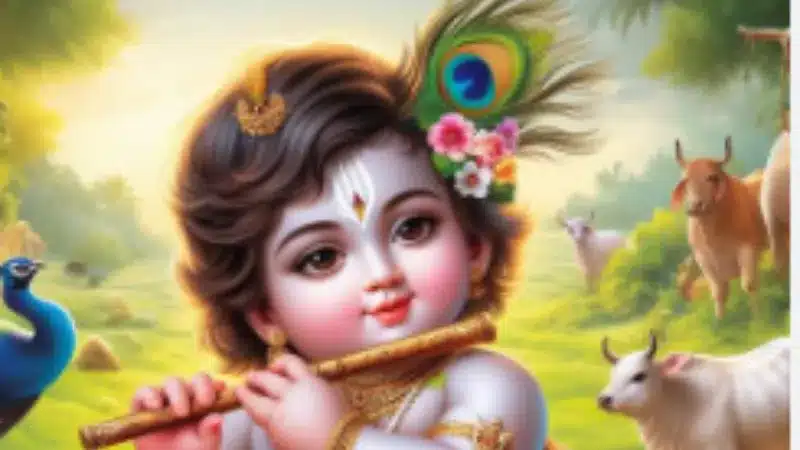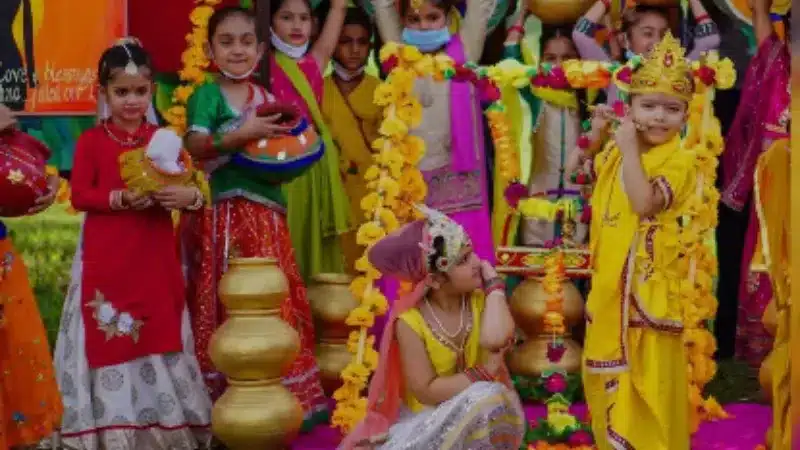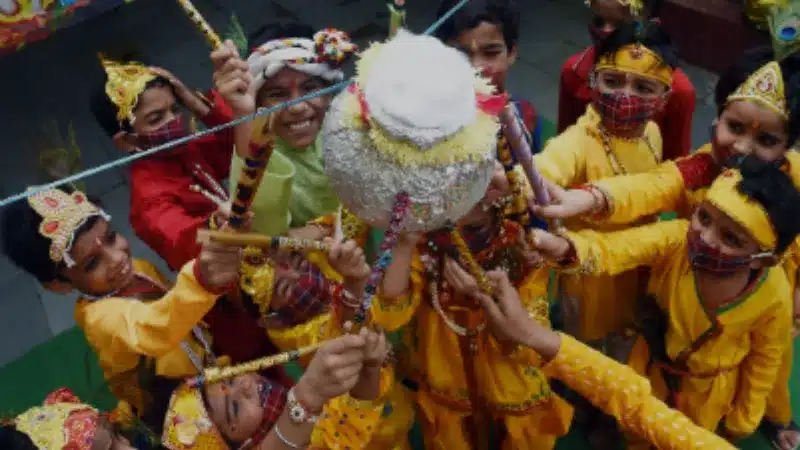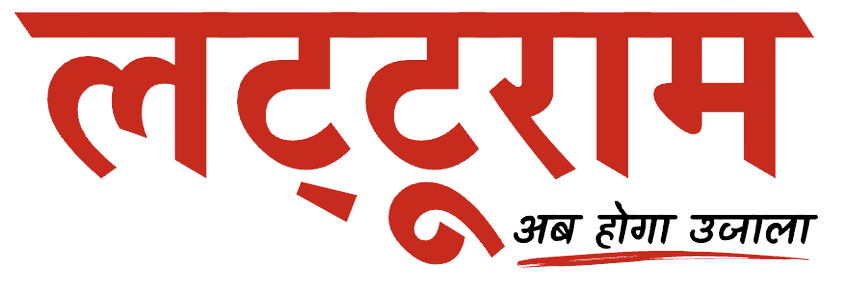
One of the most celebrated holidays in Hinduism is Janmashtami, sometimes referred to as Gokulashtami or Krishna Janmashtami. In various areas of India, people commemorate the birth of Lord Krishna, the eighth incarnation of Lord Vishnu, with great fervor and enthusiasm.
What Janmashtami Means
Janmashtami is observed on the eighth day, or Ashtami, of the dark fortnight, or Krishna Paksha, in the month of Bhadrapada, in accordance with the Hindu Lunar Calendar. If dates are to be followed, Janmashtami 2024 is scheduled for August 26 this year. Typically, this occurs in August or September.
Read Also – Almond Benefits For Women: Can Almonds Help Reduce Diabetes And Blood Sugar?
Since Lord Krishna is thought to have been born in Mathura to Devaki and Vasudeva more than 5,200 years ago, the day is revered religiously. The celebration of his birth honors his heavenly purpose of bringing dharma (righteousness) and ending evil. Older people will tell you that Krishna was born to end the oppressive rule of King Kansa, his maternal uncle, who had planned to have him killed. Krishna’s incredible survival during infancy and boyhood, despite multiple efforts by Kansa, represents the triumph of good over evil.
Why Do We Celebrate Janmashtami For Two Days?

The two-day celebration of Janmashtami is one of its distinctive features. A common question is “why is it so?” The Hindu lunar calendar and Krishna’s birthdate provide the answer.
On the eighth day of Krishna Paksha, or Ashtami tithi, Lord Krishna was born at midnight. The Ashtami tithi may fall on two consecutive days, depending on the time of midnight, because in Hindu tradition, the day is measured from dawn until the next sunrise. As a result, many areas observe Janmashtami for two days, particularly in locations with significant religious significance like Mathura and Vrindavan.
Read Also – 8 Tips To Make First School Day Easier For Kids
Devotees fast for the entire day on the first day, offer unique prayers, and remain up until midnight, the moment of Krishna’s birth. Nanda Utsav, the following day, commemorates the joyful festivities of Krishna’s birth, during which devotees break their fast and engage in a variety of cheerful activities.
How Do People Celebrate Janmashtami?
There are many different traditions and rituals associated with Janmashtami celebrations, which showcase India’s rich cultural diversity. Every facet of Janmashtami is full of devotion and delight, from quiet prayers to raucous public displays, from fasting to feasting.
Trimester and Midnight Prayer
On Janmashtami, devotees keep a rigorous fast, refraining from grains and other foods. After the rite of worshiping the newborn Krishna, who is carried in a gorgeously decorated swing, the fast is broken only after midnight.
To commemorate the birth of Lord Krishna, devotees recite slokas, sing bhajans (devotional songs), and offer aartis. An essential component of the festival is the midnight vigil, or Jagran, which represents the devotees’ preparation to receive the heavenly infant into their life.
How Do People Celebrate Janmashtami?
Temples and homes are embellished with elaborate rangolis, lights, and flowers. The cradle, or jhoola, is frequently the focal point of homes and temples, and the statues of Lord Krishna are clothed in fresh garb. Particularly well-known for their extravagant decorations and lavish celebrations during Janmashtami are temples such as the ISKCON temples in Delhi and Vrindavan, the Jagannath Temple in Odisha, and Prem Mandir in Vrindavan.
Numerous temples have unique Jhankis (tableaux) that portray events from Krishna’s life, drawing sizable throngs of worshippers. These Jhankis frequently feature stories about Krishna’s childhood playfulness, his relationships with the gopis (milkmaids), and the fabled Raas Leela.
Handi Dahi

The Dahi Handi event, which happens the day after Janmashtami, is one of the liveliest and most thrilling parts of the festival. Maharashtra is a particularly popular state for this culture. Young men build human pyramids to reach and smash a pot (handi) that is held high above the ground and filled with butter or curd, inspired by Lord Krishna’s fondness for butter. This incident, which has earned Krishna the nickname “Makhan Chor” or “Butter Thief,” is symbolic of his lighthearted and mischievous personality.
Celebrations and Cultural Performances in Schools
In addition, Janmashtami is observed in Indian schools, where students dress up as Radha, Lord Krishna, and various figures from Krishna’s life. There are organized dances, plays, and recitations that highlight the story of Krishna’s early life, his celestial adventures, and the lessons he learned from the Bhagavad Gita.
About Latturam – latturam.com is a platform to know some facts about nature, history, health, environment and our lifestyle.
Read Also – Celebrating Teej: A Festival Of Joy And Devotion



Comments